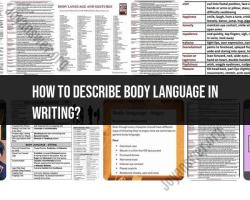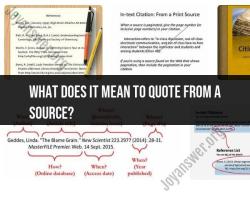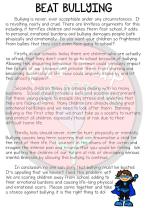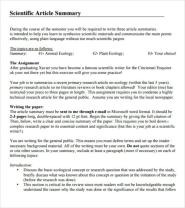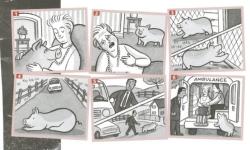How can we write an article?
Writing an article involves several steps, from brainstorming ideas to editing the final draft. Whether you're writing for a blog, a magazine, an academic journal, or any other platform, the following step-by-step guide can help you create a well-structured and engaging article:
1. Choose a Topic:
- Select a topic that interests you and aligns with the purpose or theme of the publication.
- Consider your target audience and what they would find valuable or informative.
2. Research:
- Conduct thorough research on your chosen topic. Gather information from reputable sources, such as books, articles, websites, and academic papers.
- Take notes, cite sources, and organize your research material.
3. Plan Your Article:
- Create an outline or a rough structure for your article. Decide on the main points or sections you want to include.
- Consider the article's introduction, body, and conclusion. Each section should serve a specific purpose.
4. Write a Compelling Introduction:
- Start with a strong hook to grab the reader's attention. This could be a question, a surprising fact, a quote, or a brief anecdote related to your topic.
- Provide context and introduce the main theme or issue you will address in the article.
- State your thesis or the main idea that your article will explore.
5. Develop the Body:
- Divide the body of your article into distinct sections or paragraphs. Each section should focus on a specific subtopic or point related to your main theme.
- Use clear, concise, and well-organized paragraphs. Begin each paragraph with a topic sentence that previews its content.
- Support your points with evidence, examples, data, and quotes from your research.
- Ensure a logical flow between paragraphs and sections to guide the reader through your arguments.
6. Maintain Clarity and Readability:
- Write in a clear, concise, and reader-friendly style. Avoid overly complex language or jargon that may confuse the audience.
- Use transition words and phrases to connect ideas and improve the coherence of your article.
7. Engage the Reader:
- Engage the reader's interest by using storytelling techniques, real-life examples, or relatable anecdotes.
- Ask questions or prompt readers to think about the topic on a deeper level.
- Encourage interaction by using a conversational tone, when appropriate.
8. Conclude Effectively:
- Summarize the main points and arguments made in the article.
- Revisit your thesis or main idea and reiterate its importance or relevance.
- Offer a thought-provoking closing statement or a call to action, if applicable.
9. Revise and Edit:
- Review your article for grammar, spelling, punctuation, and sentence structure errors.
- Check for consistency in style and tone throughout the article.
- Ensure that your article flows smoothly and maintains logical coherence.
10. Proofread:
- Carefully proofread your article for any typos or small errors.
- Consider seeking feedback from others to catch any issues you might have missed.
11. Format and Publish:
- Format your article according to the publication's guidelines, including font, spacing, and citation style.
- Add any relevant visuals, such as images, charts, or graphs, if allowed or necessary.
- Prepare a compelling headline or title that reflects the article's content and engages the reader.
- Publish your article on the chosen platform, whether it's a blog, a website, a print publication, or an academic journal.
12. Promote Your Article:
- Share your article on social media, in relevant online communities, or with your target audience to increase its visibility.
- Engage with readers by responding to comments, questions, or feedback.
Writing an article is a creative process that requires careful planning, research, and revision. By following these steps, you can craft informative, engaging, and well-structured articles that effectively communicate your ideas to your intended audience.
Crafting an Article: Tips on How to Write Effectively
Here are some tips on how to write an article effectively:
- Choose a topic that you are passionate about and that you know well. This will make the writing process more enjoyable and easier for you.
- Define your audience. Who are you writing for? What do you want them to learn or take away from your article? Once you know your audience, you can tailor your writing style and content to their needs.
- Do your research. Even if you are writing about a topic that you know well, it is important to do your research to make sure that your information is accurate and up-to-date.
- Create an outline. This will help you to organize your thoughts and ensure that your article flows well.
- Write a strong introduction. The introduction should grab the reader's attention and introduce the topic of your article.
- Support your claims with evidence. This could include statistics, quotes from experts, or personal anecdotes.
- Write in a clear and concise style. Avoid using jargon or overly complicated sentences.
- Proofread your article carefully. Make sure to catch any errors in grammar, spelling, or punctuation.
Here are some additional tips:
- Use a strong headline. The headline is the first thing that readers will see, so make sure that it is attention-grabbing and informative.
- Use subheadings. Subheadings can help to break up your article and make it easier to read.
- Use images and videos. Images and videos can help to make your article more visually appealing and engaging.
- Promote your article. Once you have written your article, be sure to promote it on social media and other channels to reach your target audience.
Mastering the Art of Article Writing: Best Practices
Here are some best practices for mastering the art of article writing:
- Read widely. The best way to improve your writing skills is to read as much as you can. Pay attention to the writing styles and techniques that other authors use.
- Write regularly. The more you write, the better you will become at it. Try to write something on a daily basis, even if it is just a few sentences.
- Get feedback. Ask others to read your work and give you feedback. This can help you to identify areas where you can improve.
- Edit your work carefully. Once you have finished writing your article, take some time to edit it carefully. Proofread for any errors in grammar, spelling, or punctuation.
Writing an Article: Steps and Strategies for Success
Here are some steps and strategies for writing an article successfully:
- Choose a topic. What are you passionate about? What do you know a lot about? Choose a topic that you are excited to write about.
- Do your research. Once you have chosen a topic, it is important to do your research. This will help you to gather information and support your claims.
- Create an outline. An outline will help you to organize your thoughts and ensure that your article has a clear structure.
- Write a strong introduction. The introduction should grab the reader's attention and introduce the topic of your article.
- Write the body of your article. This is where you will develop your ideas and support your claims.
- Write a strong conclusion. The conclusion should summarize your main points and leave the reader with something to think about.
- Proofread your article. Once you have finished writing your article, take some time to proofread it carefully. Make sure to catch any errors in grammar, spelling, or punctuation.
By following these steps and strategies, you can write an article that is informative, engaging, and well-written.



